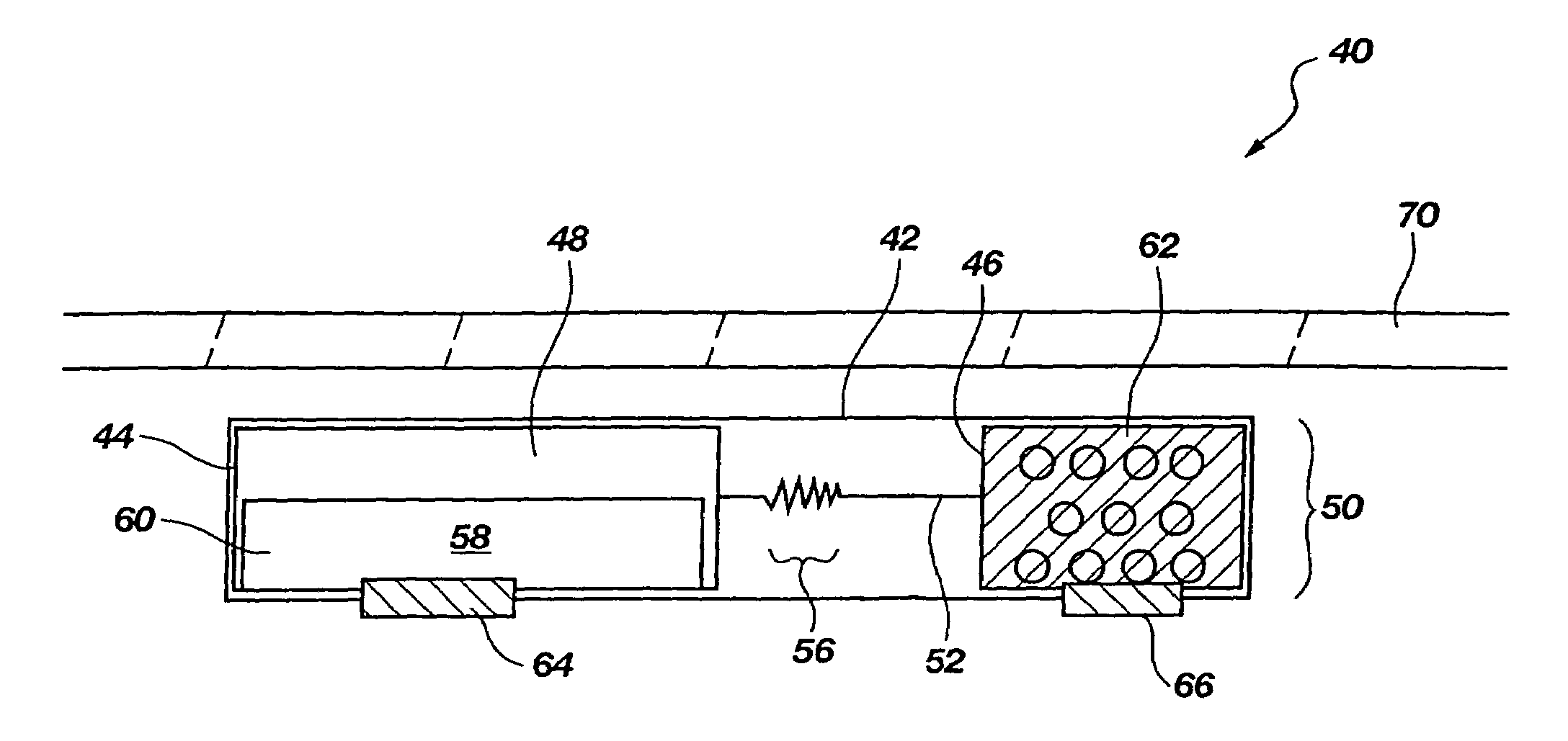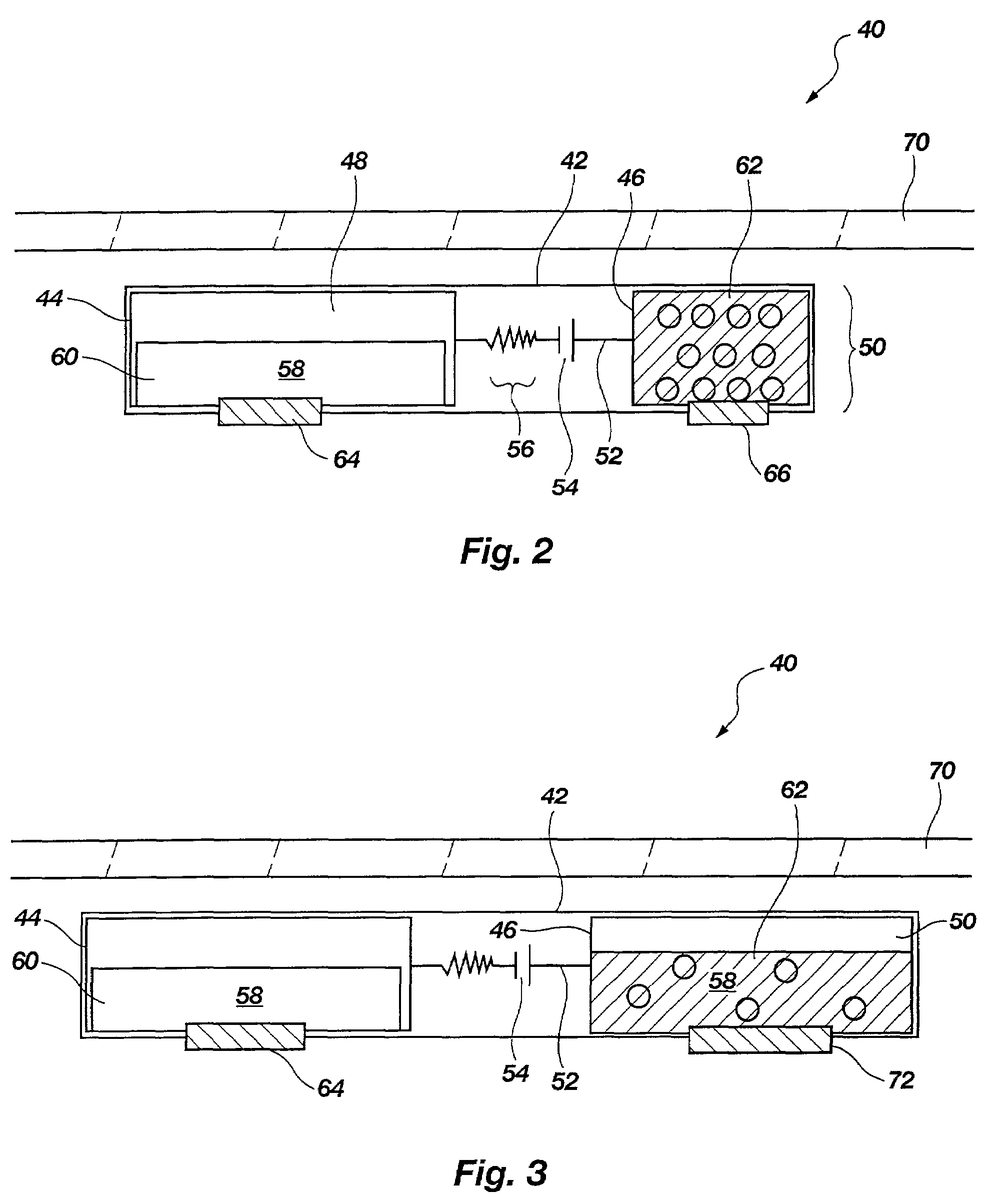Iontophoretic drug delivery systems
a technology of electrotransport device and ionophoretic, which is applied in the direction of pharmaceutical delivery mechanism, medical preparation, therapy, etc., can solve the problems of poor bioavailability, liver toxicity, drug breakdown and degradation, and the likelihood of drug breakdown and degradation due to digestive processes, so as to facilitate the transport and inhibit the effect of passive diffusion
- Summary
- Abstract
- Description
- Claims
- Application Information
AI Technical Summary
Benefits of technology
Problems solved by technology
Method used
Image
Examples
Embodiment Construction
[0034]The present disclosure relates to improved apparatus and methods of fluid delivery to a subject. In this regard, an electrotransport apparatus, and methods of using the apparatus for drug and other beneficial fluid delivery, are described in relation to the drawing figures. The present disclosure further includes, among other things, novel implantable osmoelectrochemically driven pumps which may be used for site-specific delivery of a drug and other beneficial fluid to a subject.
[0035]The term “electrotransport” is used herein to refer to the facilitated migration of ionically charged or uncharged substances across body tissues of a subject upon application of an electric potential to the body tissue. “Electrotransport” thus refers to iontophoresis, electroporation, and electroosmosis transport mechanisms, and combinations of any of these.
[0036]An embodiment of an electrotransport apparatus 40 of the present invention is illustrated schematically in drawing FIG. 2. Notably, al...
PUM
 Login to View More
Login to View More Abstract
Description
Claims
Application Information
 Login to View More
Login to View More - R&D
- Intellectual Property
- Life Sciences
- Materials
- Tech Scout
- Unparalleled Data Quality
- Higher Quality Content
- 60% Fewer Hallucinations
Browse by: Latest US Patents, China's latest patents, Technical Efficacy Thesaurus, Application Domain, Technology Topic, Popular Technical Reports.
© 2025 PatSnap. All rights reserved.Legal|Privacy policy|Modern Slavery Act Transparency Statement|Sitemap|About US| Contact US: help@patsnap.com



